Last week our Level 3 students started to explore how ink and water flows on paper as they experimented with various line techniques. Shown above is Fiona’s first study of wonky lines and watercolor from a reference book on urban sketching.

Last week our Level 3 students started to explore how ink and water flows on paper as they experimented with various line techniques. Shown above is Fiona’s first study of wonky lines and watercolor from a reference book on urban sketching.

Which pencil should you use for drawing? That is the question.
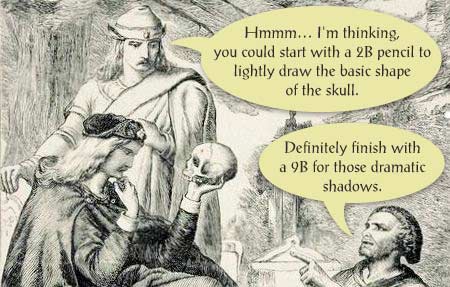
During the early 17th century, as Shakespeare’s Prince Hamlet first gazed upon a skull and questioned what to be in life, the country of England was busy mining a valuable carbon material. This dark, powdery material eventually became known as graphite (derived from the Greek word ‘graphein’ meaning ‘to write’). Artists soon discovered graphite to be extremely useful for the process of drawing.
However, the big technological breakthrough for drawing came in 1795, when a French scientist named Nicholas-Jacques Conte invented the pencil. By mixing clay with graphite, Conte found ways to alter the hardness of pencil leads which produced darker and lighter shades of black. Modern-day pencils are available in a wide range of black shades—such as 2B, 2H, HB—enabling artists to achieve endless combinations of drawing techniques and styles.
How to choose the right pencil for the job at hand? Here are recommendations on basic drawing pencils I make to students that can help you get started: Continue reading 2B or Not 2B?
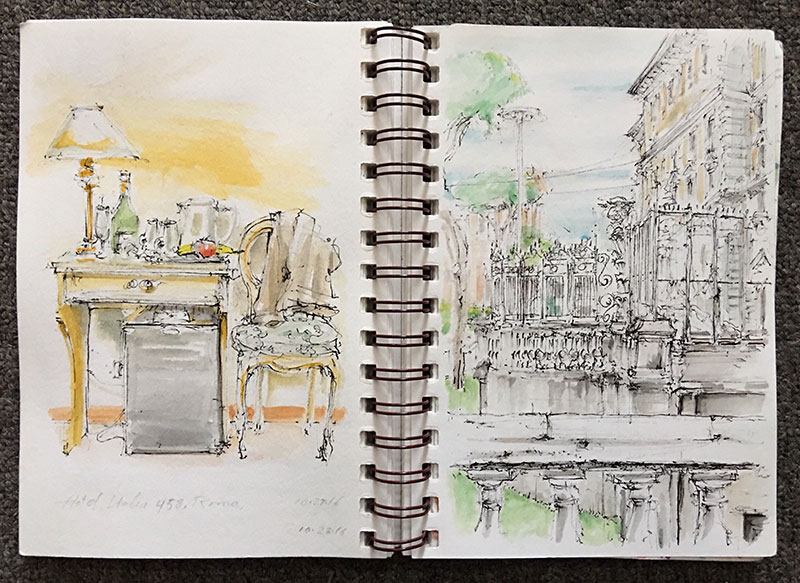
After months of anticipation, the moment of departure finally arrived—I was jetting to Italy with the purpose of diving into its culture and drawing in my sketchbooks. During the long flight, arcing over Iceland toward Zurich and Rome, I pondered Robert Henri’s advice in his book The Art Spirit:
“The sketch hunter has delightful days of drifting about among people, in and out of the city, going anywhere, everywhere, stopping as long as he likes—no need to reach any point, moving in any direction following the call of interests. He moves through life as he finds it, not passing negligently the things he loves, but stopping to know them, and to note them down in the shorthand of his sketchbook.”
That would be me; a sketch hunter for a month-long adventure in Italy.
Continue reading Drawing Italy: (Part 1) Wherever You Go, There You Are
Drawing Lab students work in sketchbooks to augment studies we usually do on larger paper. Our Wednesday and Thursday evening crews enjoy learning quick gesture sketches as well as longer, detailed studies of objects around the studio. Shown in the above photos, Lenore happily busted out a fine Picassoesque gesture sketch of the rooster, while Fiona swiftly studied textures and details of the rusty, old lantern.
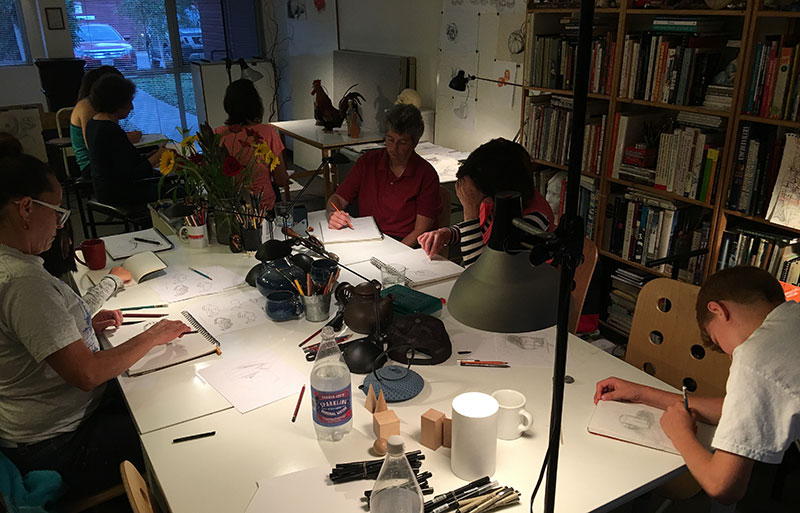
Regular practice in a sketchbook is an important aspect of improving observational drawing skills. The sketchbook is also a powerful tool for drawing from imagination, organizing ideas for projects, and journaling one’s deepest thoughts. Continue reading Students Explore the Benefits of Sketchbooks
During the past several months, as always, our studio enjoyed opening the doors to a diverse mix of students from Santa Cruz as well as international visitors, all with diverse skill levels and interests in drawing. Our Drawing Lab sessions were festive yet focused on improving skills. Continue reading In the Studio & In the Streets: Summer Highlights 2016
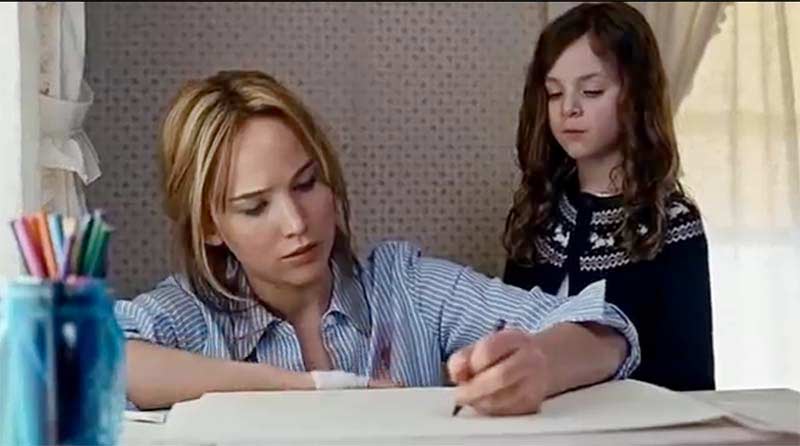
Note: Although posted in 2015, this piece still has a lot of excellent information about the role of drawing in the movies.
Whether it be a cameo appearance, or a major role, drawing can play an important part in the success of a motion picture. For years I’ve taken note on how drawing is used as a storytelling device in movies, and the many ways characters are shown drawing in everyday life. Here are highlights from my list of past indie and major films as well as some of this year’s Oscar contenders that feature drawing scenes. So grab some popcorn, sit back, and enjoy the show. Continue reading Drawing on the Big Screen
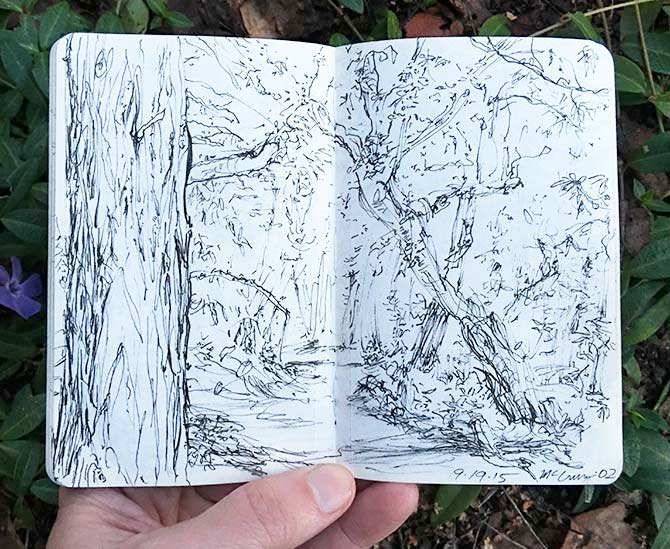
On urban streets or nature trails, where I enjoy sketching swiftly, I often find myself struggling with how to show realistic depth in my drawing. I’ve come up with a few strategies that use emphasis of lines and tones to create the illusion of depth and I’d like to share them with you. Continue reading Emphasis In Your Drawing
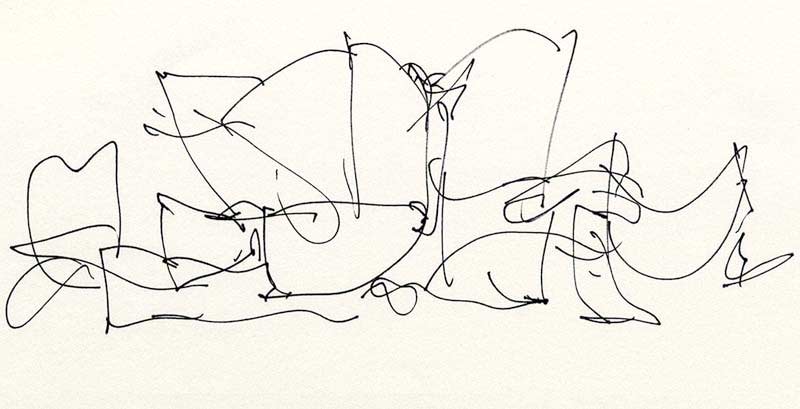
These drawings look like they could have been made by anyone—a child scribbling just for fun, an employee doodling during a staff meeting—but they’re not.
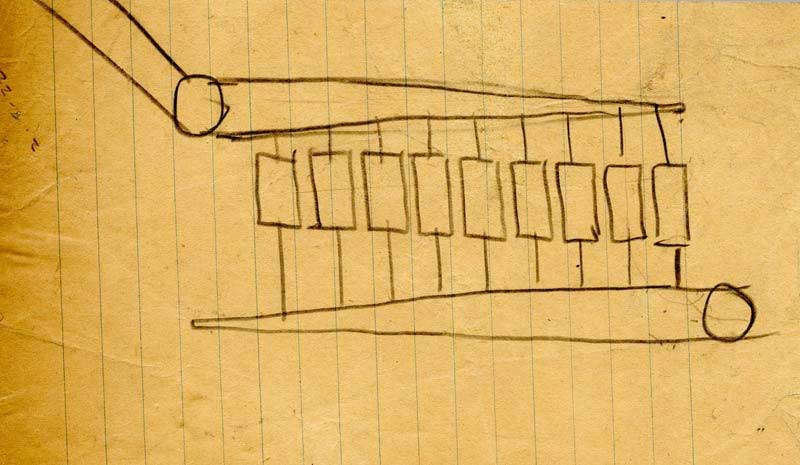
Extraordinary ideas can start with ordinary drawings. Brilliant thinkers use drawing as a tool for solving problems and conveying ideas. Can you guess who made the drawings shown above? Continue reading These Could Be Anybody’s Drawings